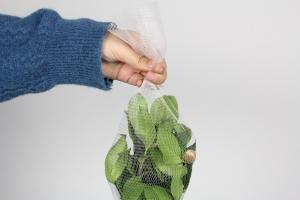What is the Milkweed Plant
The Milkweed plant, scientifically known as Asclepias, is a genus of plants in the family of Asclepiadaceae, commonly found in North America. It is a herbaceous perennial plant that thrives in various habitats such as wetlands, meadows, and dry open fields. It is also known for its distinctive and ornamental flowers, which draw a host of pollinators, including monarch butterflies.
The Anatomy of a Milkweed Plant
A milkweed plant has a unique anatomy that is adapted for survival in different environments. The plant's stem is erect and sturdy, and it can grow up to 6 feet tall. Meanwhile, the leaves are elliptical in shape, have a velvety texture, and can grow up to 8 inches long. The flowers, which are the most recognizable part of the plant, are star-shaped and come in different colors such as pink, purple, and white. The butterfly's favorite species is the Common Milkweed, whose flowers are pinkish-purple.
The Significance of Milkweed Plants
Milkweed plants are of great ecological significance, with an essential role in supporting the survival of monarch butterflies, as well as other pollinator species. They offer a food source to butterflies, who depend on their nectar, as well as providing a habitat for other insects. In addition, milkweeds secrete a latex substance which make them unappealing to most herbivores, serving as a survival mechanism for the plant.
Milkweed Plants and Sustainable Agriculture
Milkweed plants have also become a popular topic in sustainable agriculture. With monarch butterfly populations in decline, it has become even more important to create habitats that increase their survival chances. Agricultural practices that encourage the use of milkweed plants are becoming increasingly popular because they provide a natural and sustainable way to manage pest control without negatively affecting the environment. This can result in better crop yields and biodiversity while still respecting the ecosystem's delicate balance.
In Conclusion
The milkweed plant is a fascinating and critical plant species that plays an essential role in ecosystems and sustainable agriculture. The plant's distinct anatomy and ecological significance make it a valuable and irreplaceable component of our natural world. With proper management, we can ensure that we preserve this species, nurturing it for generations to come.

 how many times do yo...
how many times do yo... how many planted tre...
how many planted tre... how many pine trees ...
how many pine trees ... how many pecan trees...
how many pecan trees... how many plants comp...
how many plants comp... how many plants can ...
how many plants can ... how many plants and ...
how many plants and ... how many pepper plan...
how many pepper plan...































